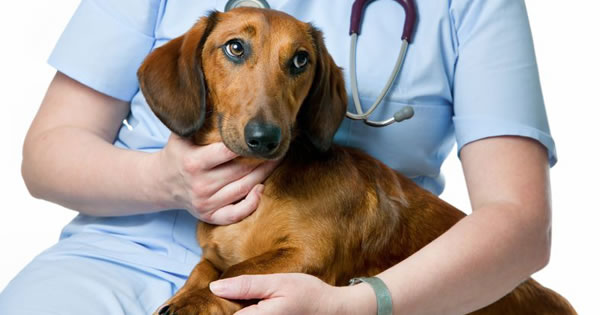The degree of treatment success for sick or injured pets frequently depends on good teamwork between the veterinarian and the pet parent. Few conditions require a greater commitment to proper home care than intervertebral disk disease ( IVDD ). Please see a related article here for more information about the condition, including a list of breeds most susceptible to IVDD.

IVDD: Understanding your role in your pet’s recovery
Your first step Get a diagnosis from your veterinarian as soon as you notice any of the symptoms that may be related to a back problem in your pet. If a ruptured intervertebral disk is the cause of the problem, early treatment will have a profound effect on the success of therapy. Powerful, short acting corticosteroids are often administered right away to reduce inflammation and pressure on the spinal cord.
Making decisions After a neurological exam, x-rays and possibly other diagnostic tools like a myelogram, CT scan or MRI, your pet’s doctor will present a treatment plan. Depending on many variables, the plan could range from very conservative to surgical intervention. Listen closely, ask questions, and get a clear understanding of the diagnosis and the options for treatment. Regardless of the treatment plan, when your pet is released to go home, you will play a major role in the healing process.
Intervertebral Disc Disease Commitment
Make a long-term commitment. There is no “quick fix” for intervertebral disk disease in dogs. Be prepared for some significant changes in your routine interaction once the patient is under your care at home. The following list is not all-inclusive, and each situation will vary. But, these are some basic responsibilities you may be asked to fulfill. Most importantly, depend on and follow all the recommendations of your veterinarian for your pet:
- Diligently administer all medications as prescribed. Continued control of pain and inflammation is critical.
- Feed a diet that will result in a healthy weight and body condition. Overweight animals have more difficulty healing and are more susceptible to future back issues.
- Confine the patient in a crate for 6 to 8 weeks. Yes, this means 24 hours each day except for short potty breaks in most cases. Take her out for a few minutes, and then return to the crate.
- Even though your patient will likely experience less pain over time and appear to be ready to return to normal activities, strict adherence to crating for the full-prescribed time is essential. Making the crate comfortable makes it easier to comply.
- Exercise in a tub of warm water. There should be just enough water to provide some buoyancy. Your assistance will be needed. Never begin this procedure before the end of crate confinement unless recommended by your veterinarian. The warm water can assist in return of circulation to the muscles, and the buoyancy will encourage movement of the limbs without undue stress on the spine.
- Teach children how to pick up your pet with support underneath the front and rear legs. Never pick them up only under the front legs. We all know how pets usually allow children to get by with most anything, so educating younger family members will go a long way in preventing further injuries and delays in recovery.
- IVDD patients should avoid stair steps, even after recovery. Consider how you can make your home “ back friendly ” while your patient is recovering so it will be ready when normal activities are allowed. This may include building ramps over steps.
- Never allow jumping from furniture, vehicles, etc. There are some clever ways to prevent access to furniture that would lead to jumping up or down.
- Never use a collar for restraint; use a harness when a leash is needed. Pets with a history of spinal injuries must avoid stress to the structures of the spine caused by straining against a neck collar. Using a harness greatly reduces this potential danger.
Navigating through an episode of IVDD can be stressful
Pet parents of dogs with intervertebral disc disease have a lot to deal with during the long process of recovery. It is difficult to witness the pain and in some cases, temporary paralysis. Being diligent about giving medications and confining a normally active pet is not easy.
And, let’s face it, unforeseen financial responsibilities add significantly to the stress. The good news is pet owners can be prepared ahead of time for this and many similar situations with coverage provided by the appropriate pet health insurance. Reducing stress on yourself significantly benefits your pet’s return to a healthy lifestyle.
A special thanks to our veterinary author Dr. Steve Pearson, Doctor of Veterinary Medicine